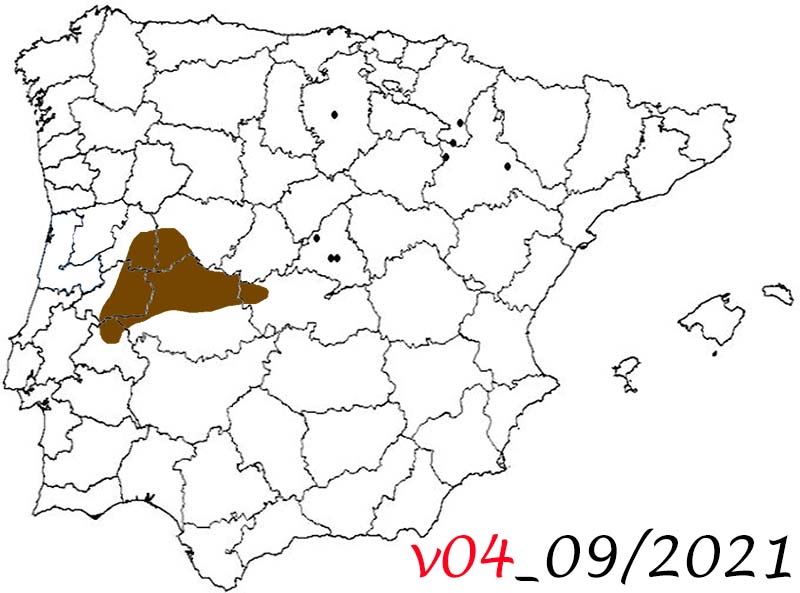


4. Travel through the West of Spain and annexed Portugal
4. Travel through the West of Spain and annexed Portugal
September 9 to 13, 2021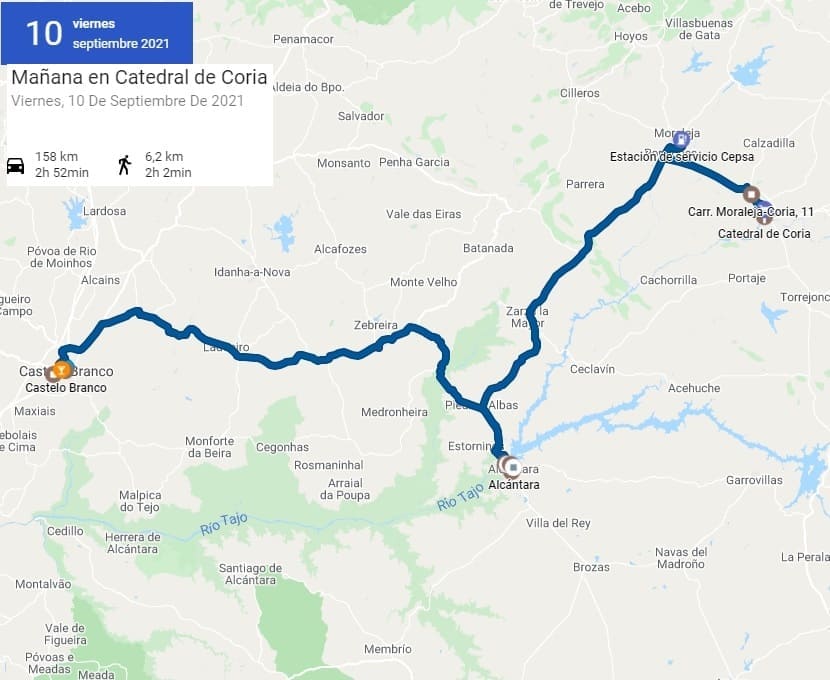

65. Coria
65. Coria
I left the hotel on the road directly to Coria, a city that I wanted to visit because it has one of the three cathedrals in Extremadura.
Founded before the Romans occupied the Iberian Peninsula, and known as Caura, the Romans gave it its present Latin name, Caurium, and this city was later granted Roman citizenship. Subsequently, in the Visigothic period, the Diocese of Coria was created which, except for the years of Muslim occupation, kept Coria as the episcopal seat until the 20th century, when the head of the diocese was divided to share it with Cáceres. After the Reconquest, Coria became the capital of a manor to which towns that still bear the name of Coria belonged, such as Guijo de Coria or Casillas de Coria. After its dissolution, Coria became the capital of the judicial district of Coria.
At present, Coria is the most important city in the northwest of the province and an important commercial and tourist center, preserving a large number of monuments and annually celebrating a festival of tourist interest in Extremadura and nationally in honor of San Juan.
First, I would arrive at the square of the new town hall, with a historic building. The next thing will be to continue towards the castle along Calle del Rey, we will see what remains of a medieval town of great importance for the Extremaduran nobility.
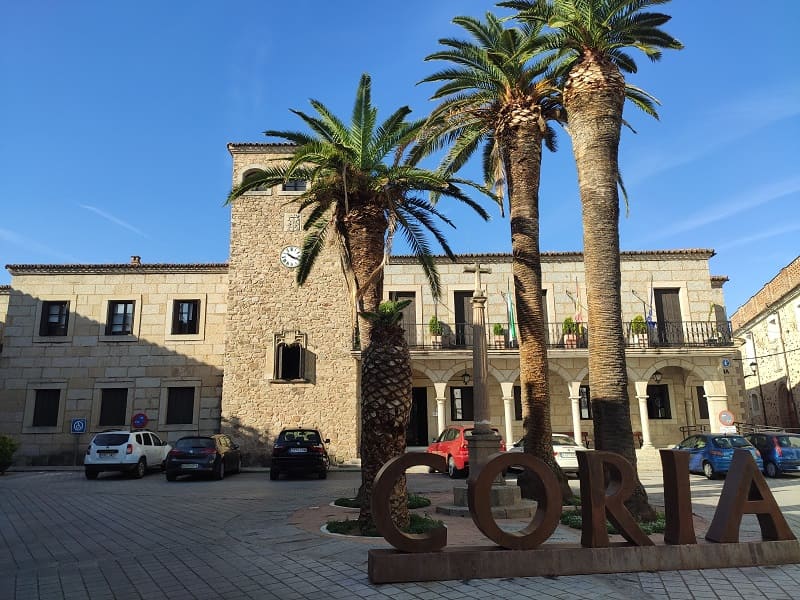
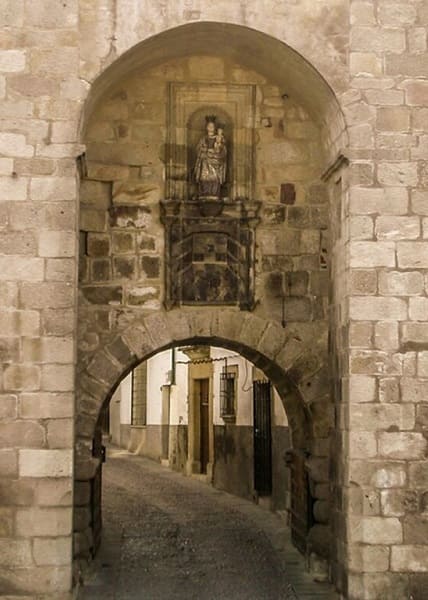
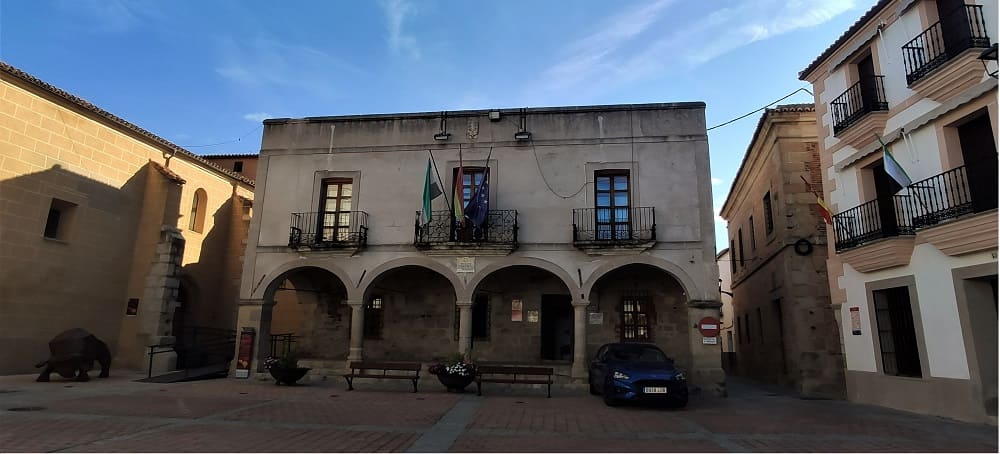
Coria Castle was built at the end of the 15th century by the Marquis of Coria and Duke of Alba de Tormes, the most powerful person in the city.
It was built on a Roman defensive construction and the keep stands out. It is currently closed and can only be seen from the outside, but there is a plan to try to enable it by restoring the interiors.
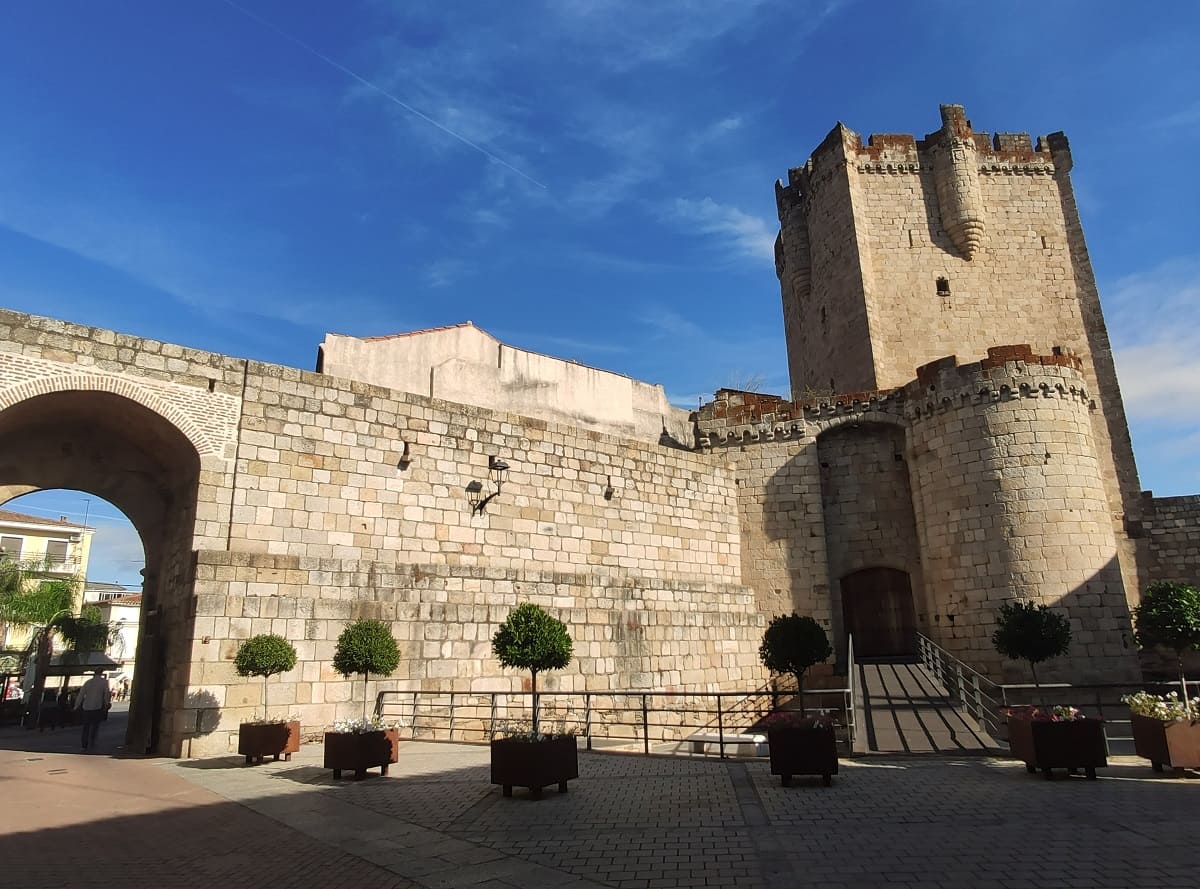
If we cross through the gate of San Francisco we arrive at Calle del Horno where we can see the entire wall of the old city.
At the end is the gate of the city or of the Guide. That was seen in the second image and we already arrived at Doctor Viera square where the cathedral is.
The cathedral seemed quite austere to me, not comparable to that of Plasencia, but it is true that it had everything necessary to be a cathedral and not a co-cathedral. It was built on the old mosque of the city, which had previously been a Visigothic temple. It is from the beginning of the 16th century and in the late Gothic style, with many additions in the Plateresque and Baroque styles, such as its bell tower.
The entrance to the cathedral is free but to access the cathedral museum and the cloister you have to pay, where there are different works of painting, sculpture and crafts.
The cathedral has a single floor plan, giving the impression of a collegiate church rather than a cathedral. The main altar has a large Baroque altarpiece from the mid-18th century. The floor is full of tombstones of bishops or nobles of Coria and some keep the names or heraldic shields but they have been deteriorated over time. It would not hurt if they were protected as in other cathedrals with a kind of protective glass.
What stands out the most is the Renaissance-style gate that closes the main chapel. The side chapels are much more recent, in the Renaissance and Baroque styles dating from the mid-18th century. The seating is also beautiful. In the Mudejar style, it has 71 chairs and is from the 16th century, with a place for the nobles of the city.
It has two sacristies, that of the canons and that of the beneficiaries. They are from the 17th century and give access to the bell tower that has a spiral staircase to go up.
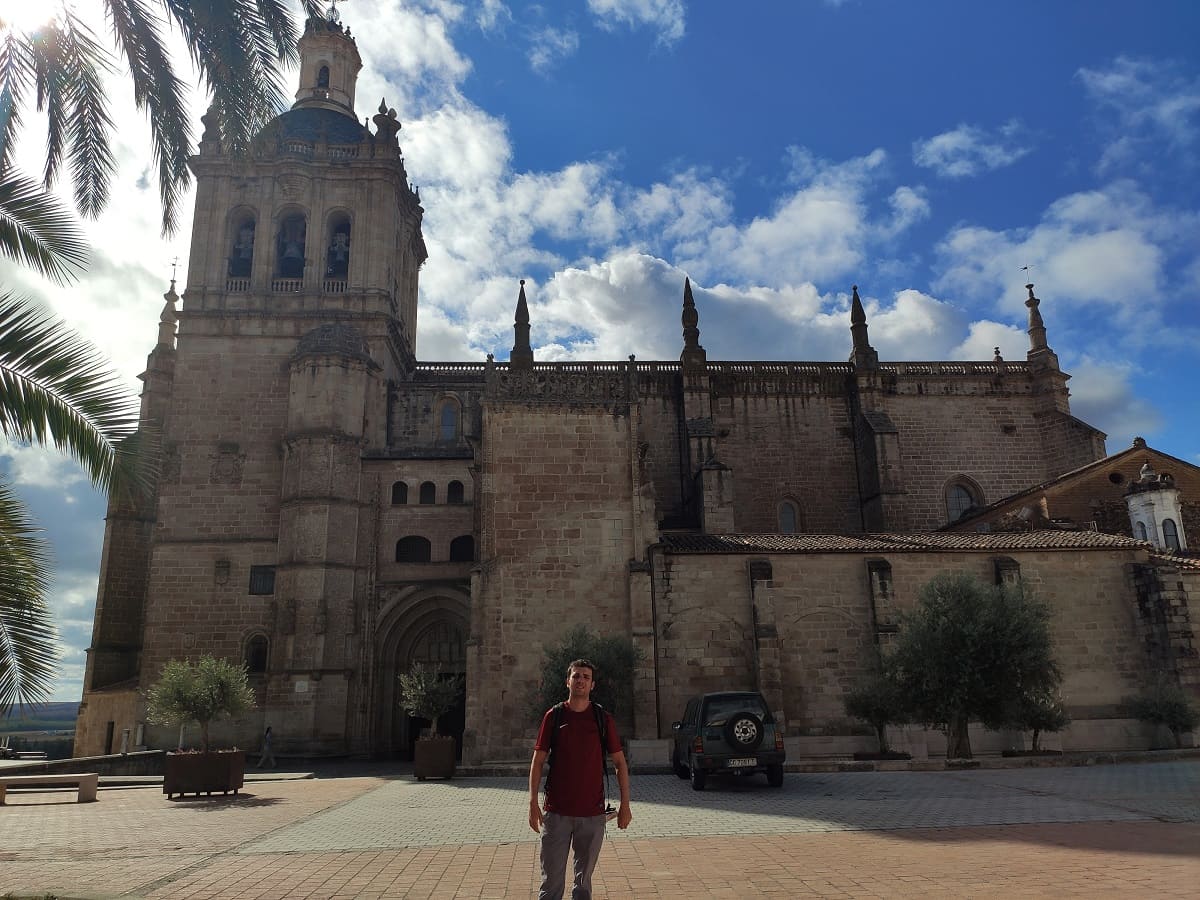
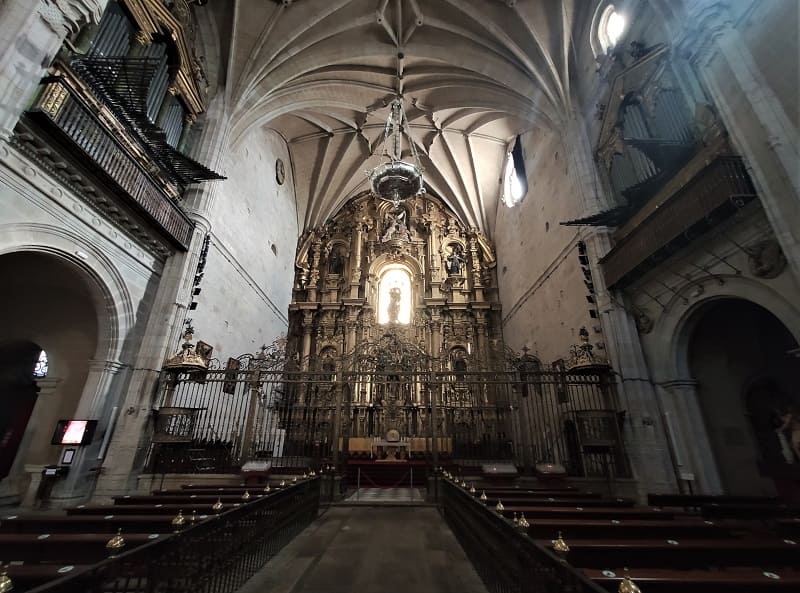
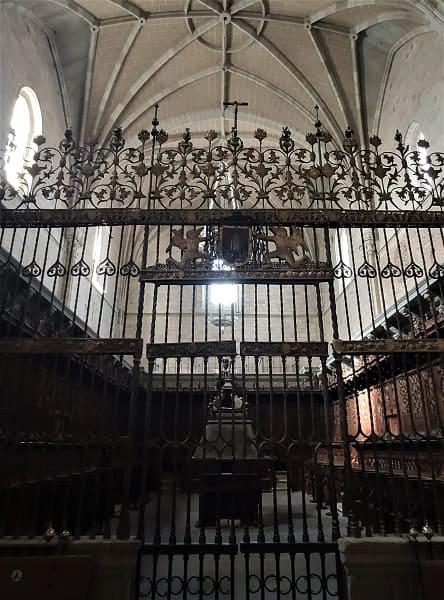
Close to the cathedral is the Plaza de España, where several of the most significant buildings are located, such as the old town hall, an old building from the 15th century, and the episcopal palace, from the 16th century, where today there are a hotel.
Next door is the church of Santiago, built in the 16th century like the cathedral but inside it is almost entirely Baroque, and Mannerist Renaissance.
Adjacent to the Plaza de España is Calle de las Monjas, so called because it is located the convent of the Mother of God, the only one still standing in Coria. This convent was founded in the 13th century, although the current building dates from the 14th-16th centuries. The church of the convent is from the 16th century with a baroque main altarpiece from the 17th century and rococo side altarpieces from the 18th century. The cloister is Renaissance from the 16th century, with a well and a trapezoidal plan, with Mudejar pavement and a collection of paintings and ivories, highlighting a table by Pedro Machuca.
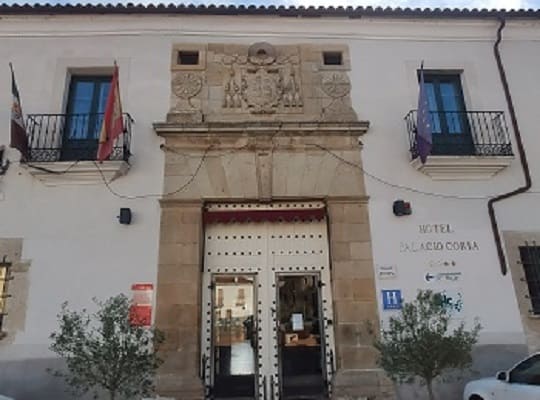
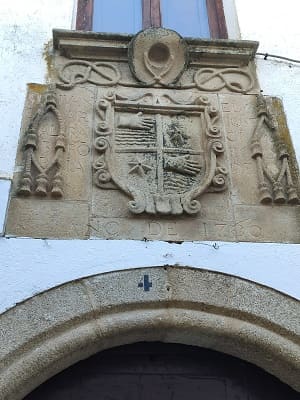
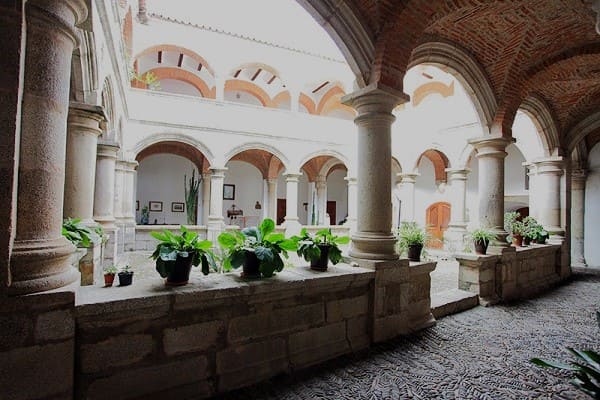
Calle de las monjas is full of houses with a lot of history on which either the year of construction is written or the coat of arms of the family that lived there is carved. The panel from the old city jail, now a museum, from the end of the 17th century stands out.
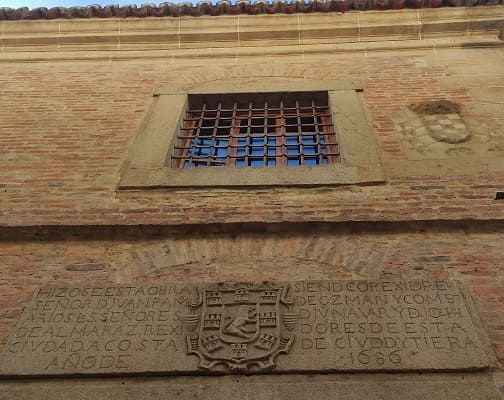
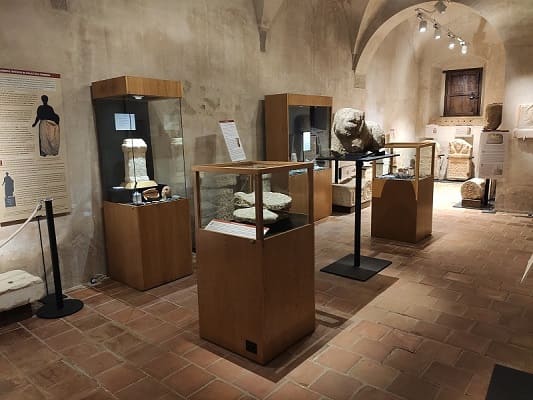
The museum has two floors, the lower floor is about the city of Coria and the jail and the one on the upper floor is a bullfighting museum. I was pleasantly surprised to see how carefully they had assembled everything in the museum, counting among others with 5 complete stuffed bulls. Not even in Seville and Huelva did a museum have so many bulls of this nature.
Also enough photographic material since Coria is one of the towns in Spain whose tradition is closely linked to the bull. Remember that in this area the large landowners and ranchers have been the ones that have had the most power in history.
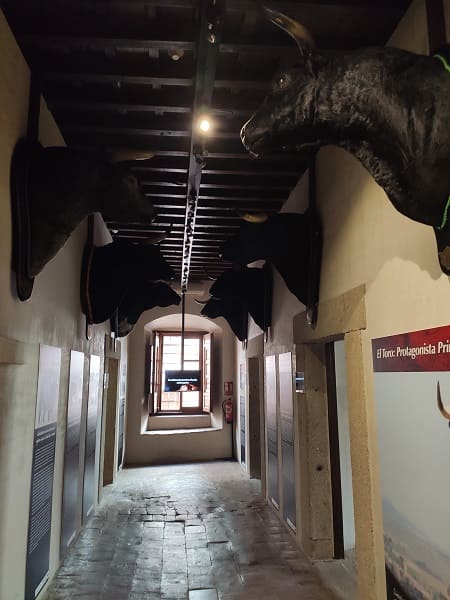
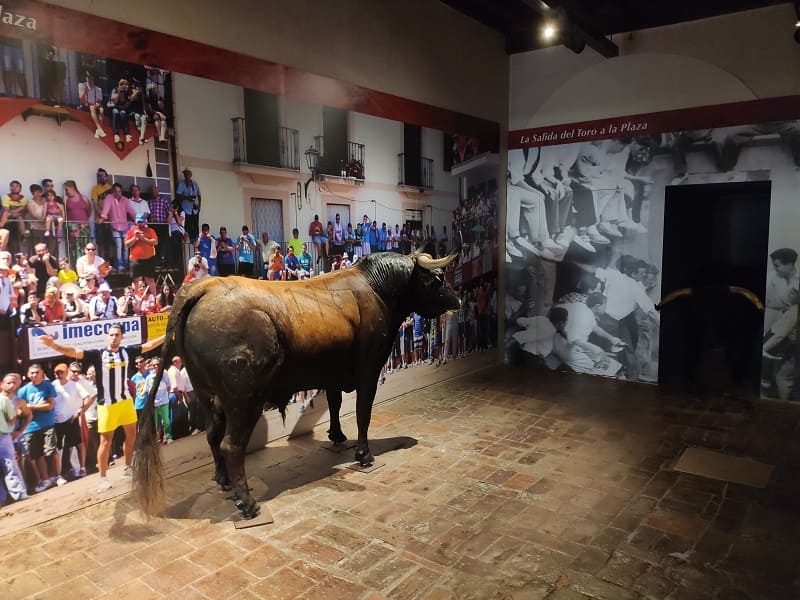
It is also worth noting the palace of the Dukes of Alba, the Alhondiga and the remains of the old via Dalmatia in Rome. I would stop at Mercadona to pick up supplies to eat on the go.

66. Alcántara
66. Alcántara
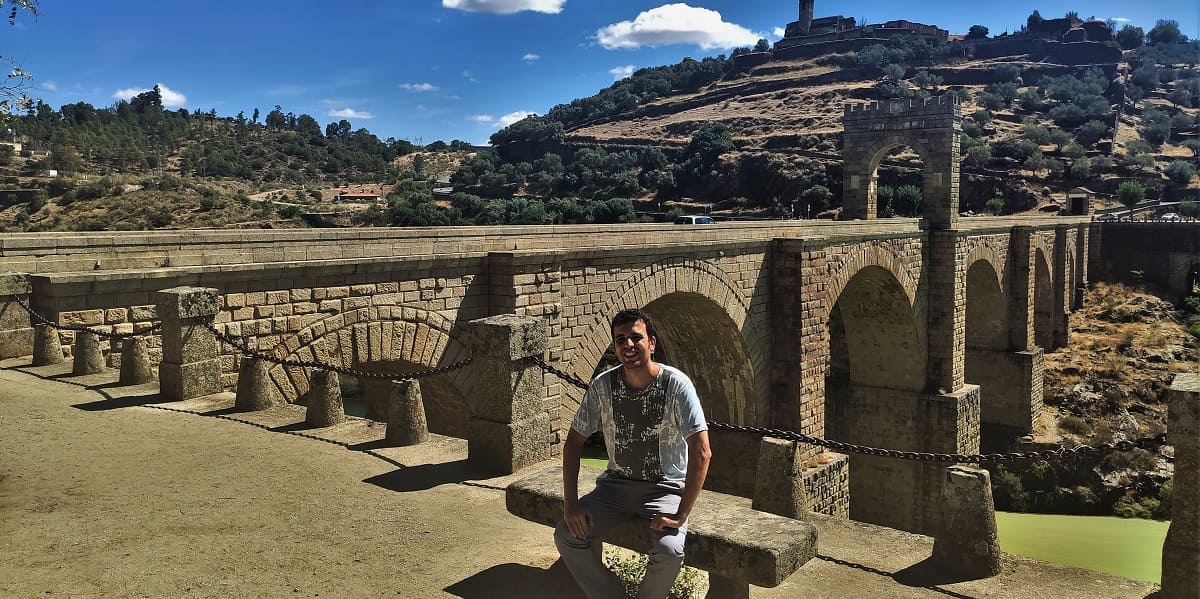
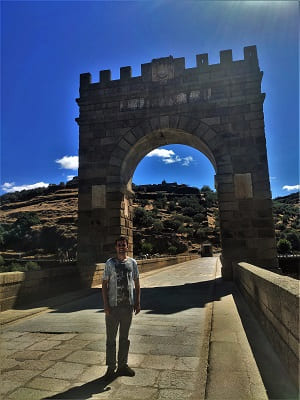
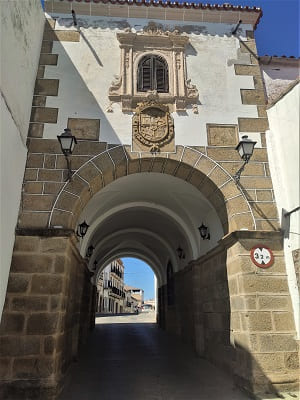 Continuing the road with the car I go up Mérida avenue where the tourist office is located. I park in the Plaza de Portugal where there are quite a few places, and there are some restaurants and bars.
Continuing the road with the car I go up Mérida avenue where the tourist office is located. I park in the Plaza de Portugal where there are quite a few places, and there are some restaurants and bars.
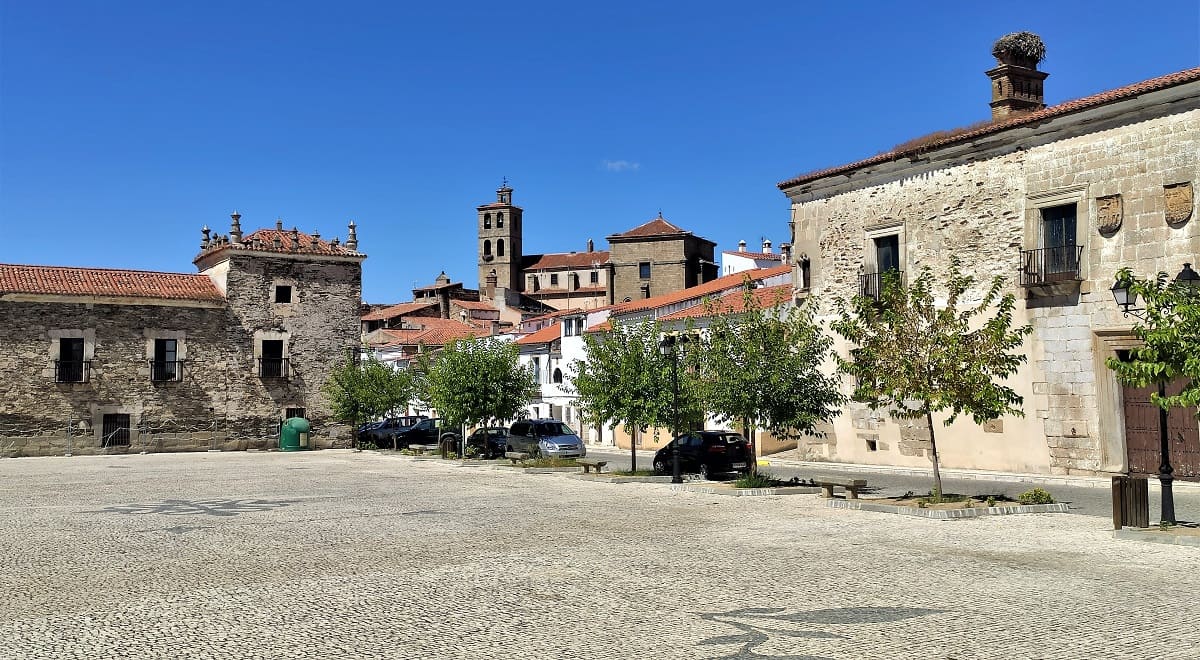
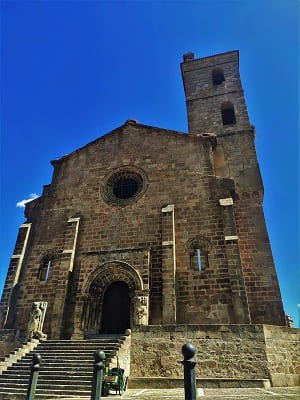
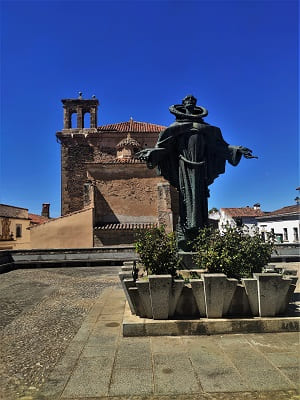
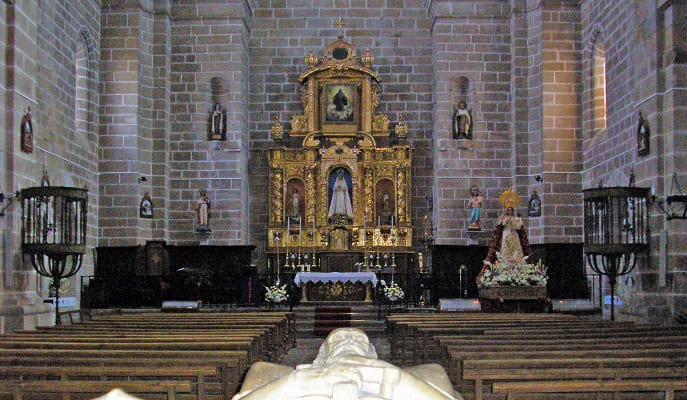
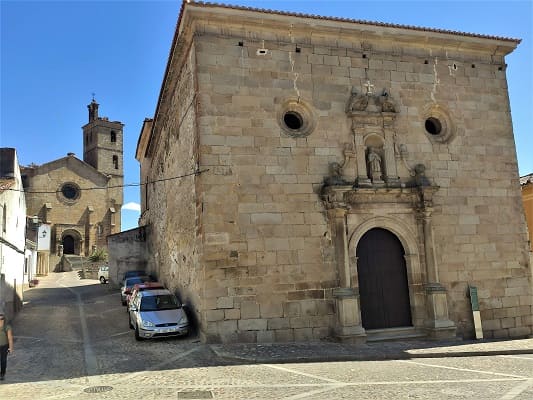
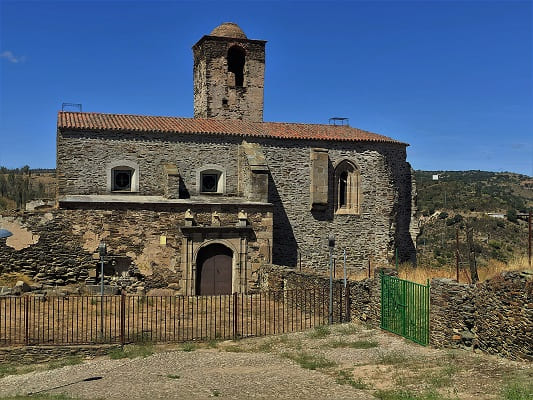

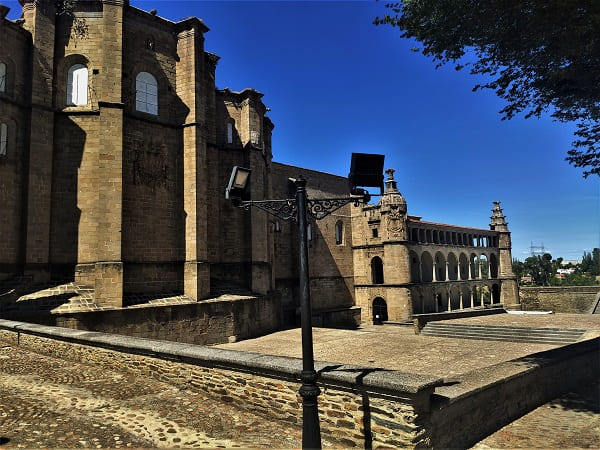
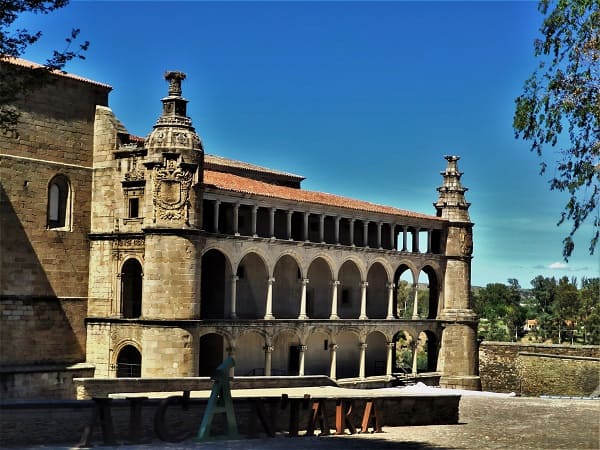
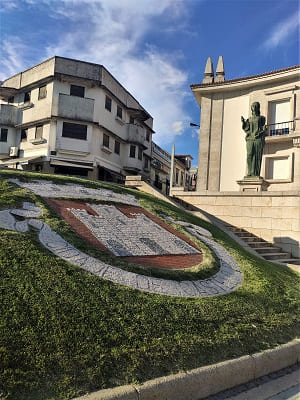
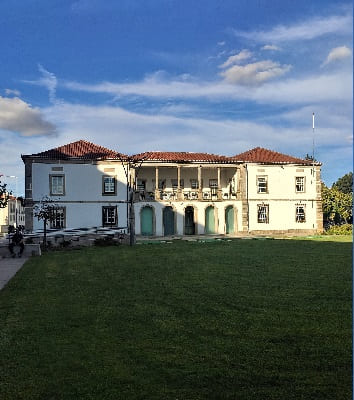 Tras pasar esta localidad entraría a Portugal.
Tras pasar esta localidad entraría a Portugal.


67. Castelo Branco
67. Castelo Branco

 Finally I would arrive at Castelo Branco where I would stay. This city has little heritage, it is more of a residential city that brings together much of the rural population of the area. Due to covid restrictions I had to provide a COVID passport at the hotel.
Finally I would arrive at Castelo Branco where I would stay. This city has little heritage, it is more of a residential city that brings together much of the rural population of the area. Due to covid restrictions I had to provide a COVID passport at the hotel.
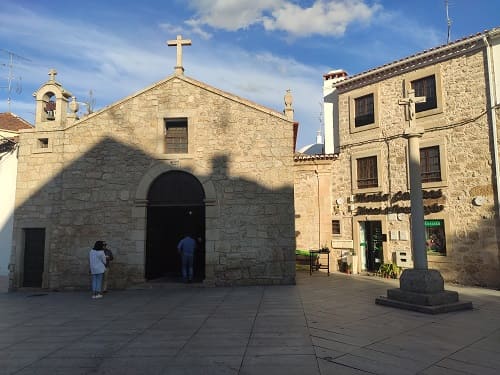
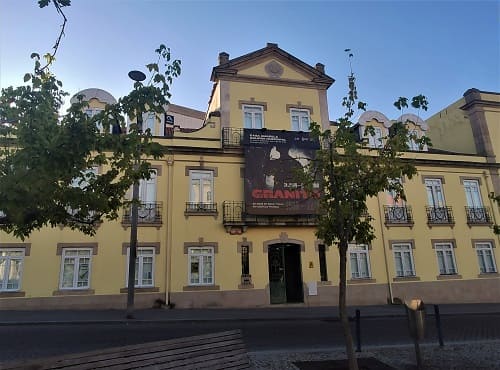
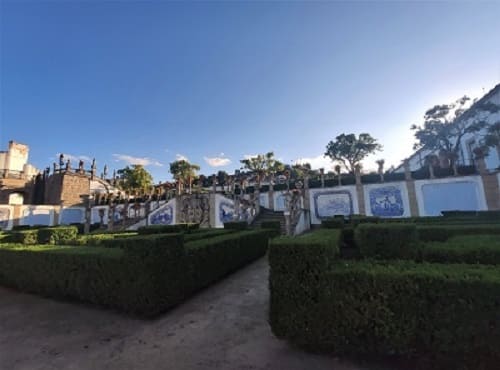
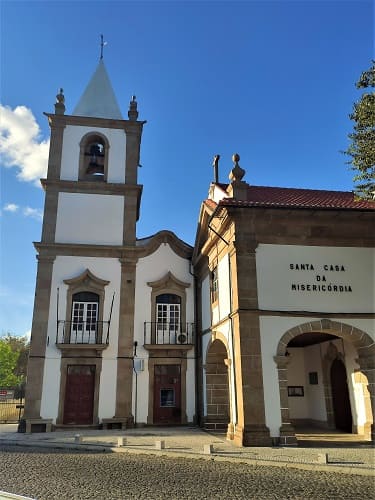
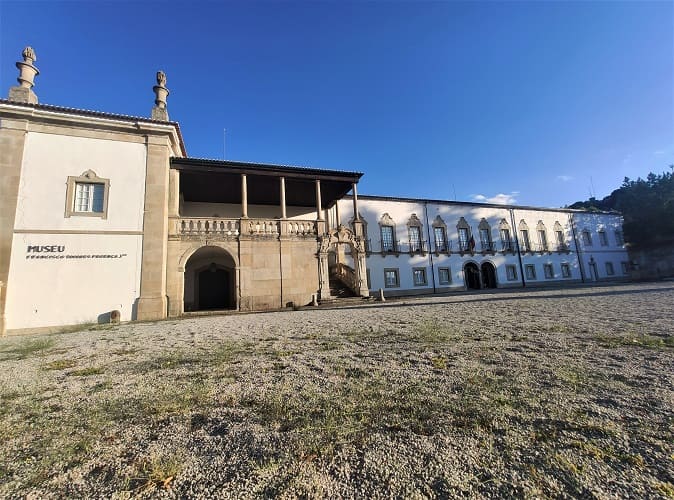
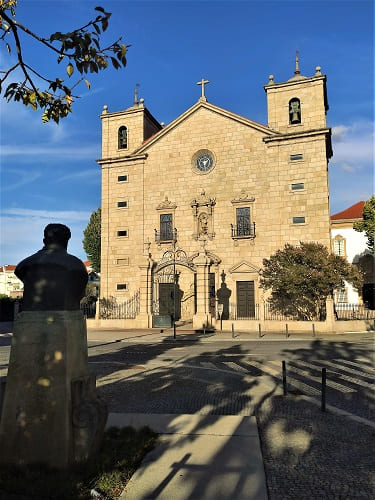
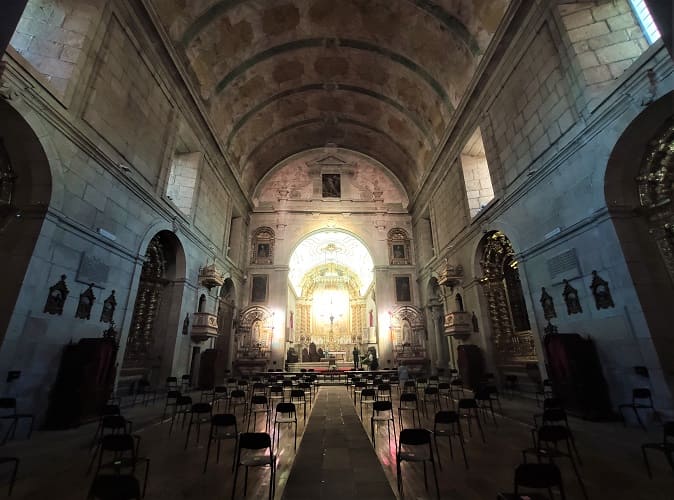
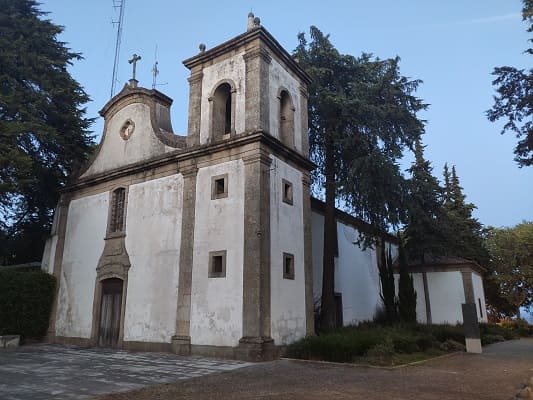
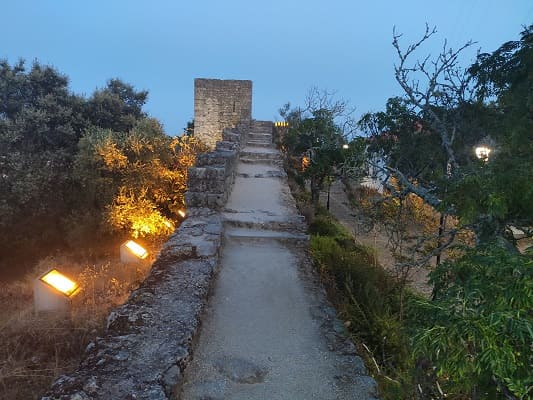
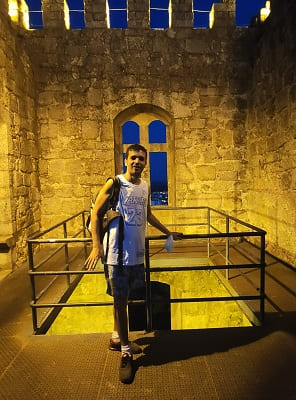
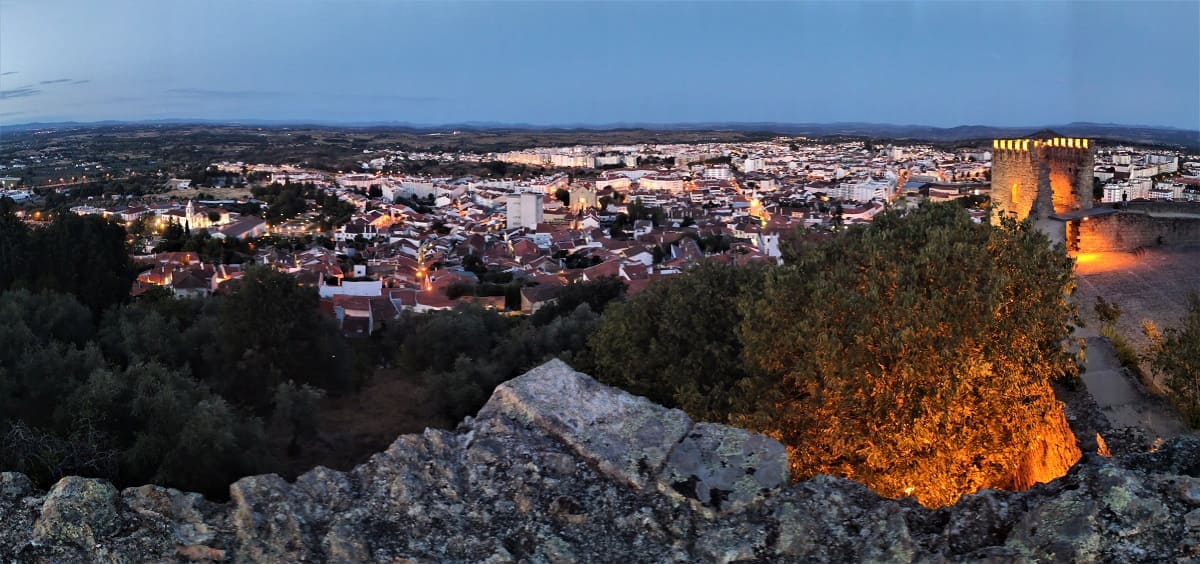
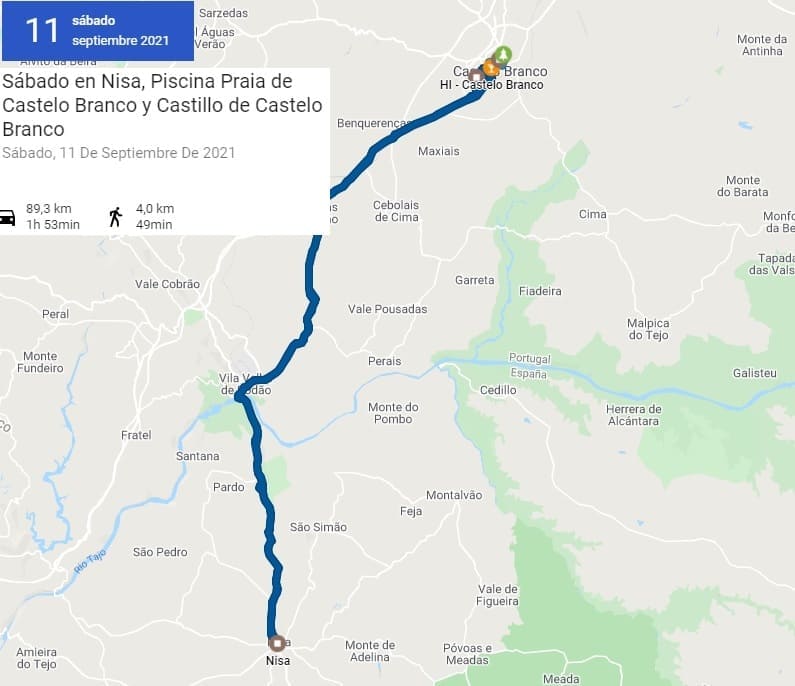
© 2016 - All Rights Reserved - Designed by Sergio López Martínez